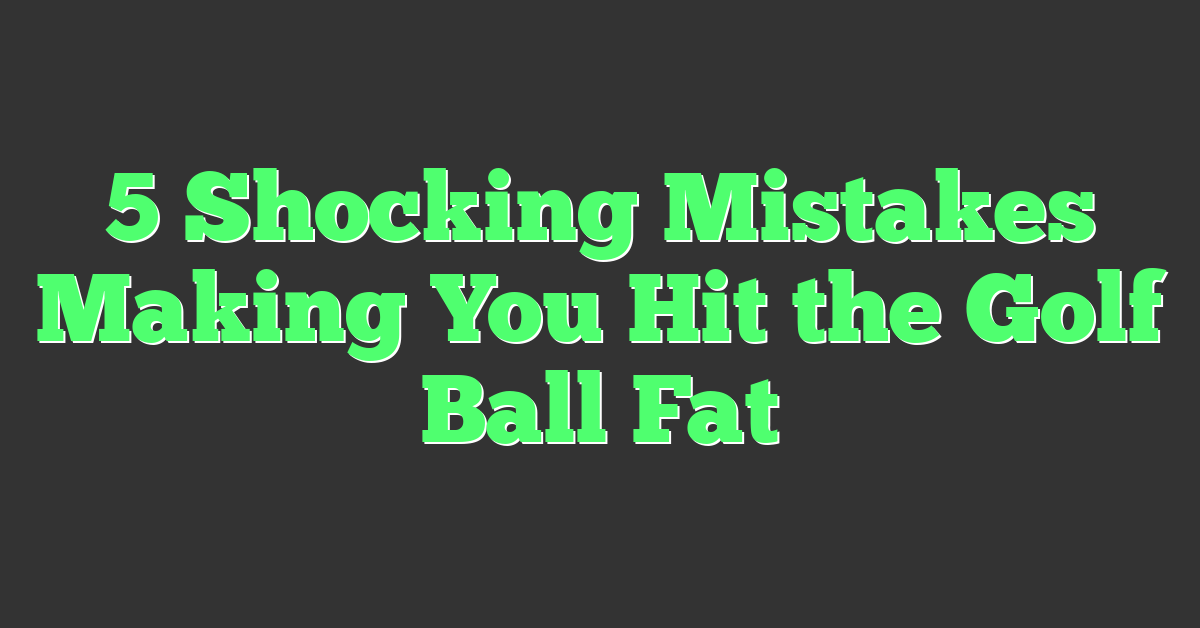Ever wondered why some golf balls seem to put a bigger dent in your wallet than others? You’re not alone. The cost of a golf ball can be as varied as the courses you play on, and there’s a fascinating world behind that price tag.

Whether you’re a seasoned pro or just hitting the links for fun, the price of golf balls can make you pause. It’s not just about the brand or the fancy packaging; there’s more to it than meets the eye.
Understanding the Factors Influencing Golf Ball Prices
As a golfer aiming to lower your scores, you know that the right golf ball is as crucial as any club in your bag. It’s not just about picking the sleekest design or the one your favorite pro uses. Instead, it’s worthwhile to grasp why golf ball costs vary and what dictates their value.
Firstly, the type of golf ball has a significant impact on price. There are options designed for distance, control, or a soft feel, and each serves a different purpose for your game. For instance, multi-layered balls with urethane covers tend to be pricier due to their construction, which offers skilled golfers benefits like better spin control and feel.
Secondly, the production technology and materials used play a big part. Advanced R&D costs to enhance aerodynamics, new dimple patterns for optimal flight, and the use of durable, high-performance materials can drive up the price.
Don’t forget the influence of branding and marketing. Top golf brands invest heavily in advertising and sponsorships, associating their products with high-level performance and prestige. This brand power is often factored into the cost, making some balls more expensive as a result.
Also, consider that the price of golf balls can reflect the quantity you’re buying. Bulk purchases or lower-grade refurbished balls can be cost-effective, but they might not offer the same playability or consistency in your game.
As for the actual numbers, take a look at how price ranges can differ:
| Type of Ball | Average Cost per Dozen (USD) |
|---|---|
| Value or Practice | $15 – $25 |
| Mid-Range | $25 – $40 |
| Premium Tour-Caliber | $40 – $60 |
Remember, while it’s tempting to go for premium balls, it’s vital to choose one that matches your skill level and playing objectives. A mid-range ball might be the sweet spot, balancing cost and performance for the keen golfer looking to improve.
The Impact of Brand on Golf Ball Costs
As a seasoned golfer, you’re well aware that the brand of a golf ball can significantly affect its price. When you’re on the hunt for new golf balls, you’ll notice that well-known brands such as Titleist, Callaway, and TaylorMade often command higher prices compared to lesser-known manufacturers.
What you’re paying for with these premium brands isn’t just a product; it’s the trust and reputation they’ve built over years. These companies invest heavily in research and development to engineer balls that provide superior performance on the course. They’ve honed their technology to offer you balls that promise better control, distance, and feel—attributes that can decidedly improve your game.
- Titleist, for instance, is renowned for their Pro V1 and Pro V1x balls, which are favored by many professional golfers and high-standard players like yourself.
- Callaway’s Chrome Soft series has made a name for its excellent spin control and feel around the greens.
- TaylorMade’s TP5 and TP5x models emphasize a combination of distance and spin control that can cater to your sophisticated playing style.
These brands also don’t hesitate to market their golf balls’ competitive edge through endorsements and sponsorships. Such marketing efforts further embed their reputation for quality in the minds of golfers, ultimately reflecting on the price tag.
Here’s a quick snapshot of average pricing for premium balls from these top brands:
| Brand | Model | Average Price Per Ball |
|---|---|---|
| Titleist | Pro V1 | $4-$5 |
| Callaway | Chrome Soft | $3-$4 |
| TaylorMade | TP5 | $4-$5 |
While these costs may seem steep, especially when you calculate the total for a dozen, remember that premium balls are designed to enhance your performance. They could be the difference between a good round and a great one. As you continue on your journey to lower your handicap, consider the impact of your golf ball choice. Opting for a high-quality ball from a reputable brand can be a wise investment in your quest to shoot lower scores.
Unveiling the Secrets of Golf Ball Packaging
When it comes to elevating your game, understanding the nuances behind golf ball packaging can give you an edge. Here’s a little insider knowledge: the way golf balls are packaged isn’t just for looks—it’s a carefully planned strategy to influence buying behavior and perception of quality.
Most premium brands, such as the ones you’re familiar with like Titleist and Callaway, often present their golf balls in sleek, sturdy boxes. The packaging is more than just a container; it’s your first touchpoint with the brand’s identity. If you’ve ever felt that surge of excitement when you purchase a new box of top-tier balls, that’s by design. The box construction, the feel of the opening mechanism, even the way the balls are nestled inside, all of that feeds into your anticipation of the performance you expect from them.
Within these elegant boxes, you’ll typically find golf balls arranged in sleeves of three. This isn’t just to keep them secure and prevent damage—it’s also a psychological play. By splitting a dozen balls into four separate sleeves, there’s an implicit suggestion of quantity and the idea of rationing your use. You’re more likely to perceive each sleeve as a valuable set, which makes you think twice about losing a ball and potentially encourages more cautious play.
Let’s break down what you’re likely to see in the packaging of high-end golf balls:
- Durable materials ensure the balls are protected and the brand is perceived as high quality.
- Sleeves of three balls, suggesting careful usage and a sense of abundance.
- Branding and marketing messages on the package that resonate with your aspirations as a golfer.
These subtle cues from the packaging influence your expectations and can mentally set you up for better performance on the course. After all, if you’re playing with what you believe to be the best, you’ll step up to match that level. Next time you pick up a new box, pay attention to how the packaging makes you feel, and consider how that translates into your confidence and gameplay.
The Connection between Golf Ball Materials and Costs
When you’re out on the course looking to shave strokes off your game, understanding the tech and materials behind your golf ball can make a difference. The cost of a golf ball often reflects the quality and engineering that goes into its creation. As a seasoned golfer, I’ve seen firsthand the evolution of golf ball technology and how it impacts cost.

Urethane cover golf balls, typically favored by low handicappers and pros, are on the pricier end. They’re known for their soft feel and high spin rates, essential for that pinpoint control around the greens you’re aiming for. These covers are more complex to produce, hence they command a higher price.
In comparison, balls with Surlyn covers are designed for durability and are more affordable. They might not offer the same level of control as urethane, but they’re tough and last longer, even if you’re sending them over the cart path more often than you’d like to admit.
The cost also scales with the design complexity inside the ball. Multilayer balls, which offer a blend of distance and spin control, incorporate advanced materials and design features. These layers are engineered to react differently upon impact, depending on the force of your swing. It’s this intricate design that contributes to the ball’s overall performance and, naturally, its cost.
Here’s a quick breakdown of typical costs associated with different types of golf balls:
| Ball Type | Average Cost per Ball | Features |
|---|---|---|
| Premium Urethane | $4 – $5 | High spin, soft feel |
| Mid-Range Urethane | $2 – $3 | Medium spin, softer feel |
| Lower-End Surlyn | $1 – $2 | Durable, lower spin |
| Practice | $0.50 – $1 | Basic performance, very durable |
Remember, as you analyze the cost of your golf balls, you’re also assessing how much value they’ll add to your game. Higher-priced balls usually offer more technology that can enhance your performance, but that doesn’t mean you should dismiss the less expensive options. They can be quite useful, especially for practice or if you’re still working on keeping the ball in play.

Unraveling the Mystery of Golf Ball Manufacturing Costs
Ever been curious about what goes into the cost of the golf balls you trust on the course? Well, strap in, because you’re about to get an insider’s peek at the manufacturing process that impacts your game and your wallet.
At the heart of it, golf ball manufacturing is a sophisticated process. The production involves multiple layers, with each layer serving a unique purpose, whether it’s to increase distance, improve control, or enhance durability. The materials selected are paramount and inherently influence the final cost.
Urethane-covered golf balls, often favored by players like you who aim for a soft feel and high control, require intricate processing. Urethane is a labor-intensive material to shape and apply, and thus, the manufacturing expenses are steeper. Surlyn-covered balls, on the other hand, cater to golfers looking for resilience at a more accessible price point.
Let’s break down the typical costs:
| Type | Material | Cost Range |
|---|---|---|
| Premium | Urethane | $45-$60/dozen |
| Mid-Range | Ionomer | $20-$40/dozen |
| Economy | Surlyn | $10-$20/dozen |
Apart from materials, the manufacturing cost also includes research and development (R&D). Manufacturers are constantly innovating, trying to find that perfect balance that could shave strokes off your score. It’s an investment in field tests, aerodynamic analysis, and player feedback sessions.

Think about the design aspects as well. Features like dimple patterns, core composition, and even paint finish aren’t just about aesthetics; they affect the ball’s performance, and thereby, its price too. A ball engineered for precision and advanced performance will inevitably nudge the price gauge north.
Remember, when you’re choosing your next dozen, you’re not just picking golf balls. You’re investing in the technology, the science, and the craftsmanship that can potentially elevate your game to its pinnacle. The cost then becomes an investment in chasing those lower scores on the scorecard.
Conclusion
So you’ve seen that the price tag on those little dimpled spheres isn’t just about the brand name—it’s a reflection of the innovation and engineering that goes into each shot you take on the course. Whether you’re reaching for the top-shelf urethane models or the more cost-effective Surlyn ones, you’re investing in your own performance. Remember it’s not just about buying golf balls; it’s about choosing the right partner for your swing. So next time you’re stocking up, think about what’s gone into making each ball. It might just give you that extra bit of appreciation as you tee off towards lowering your handicap.










